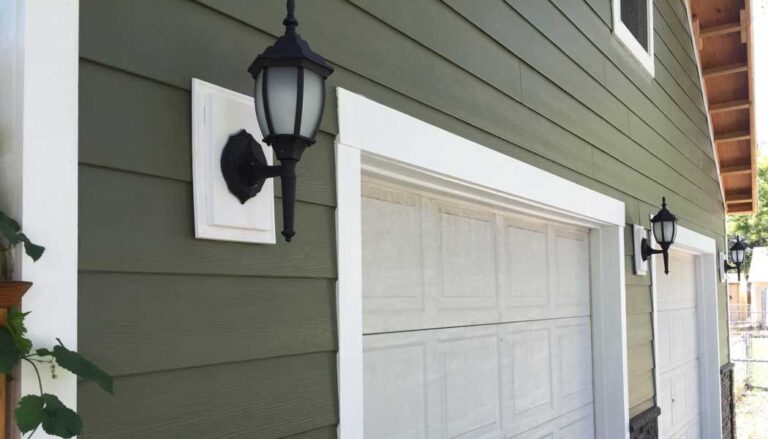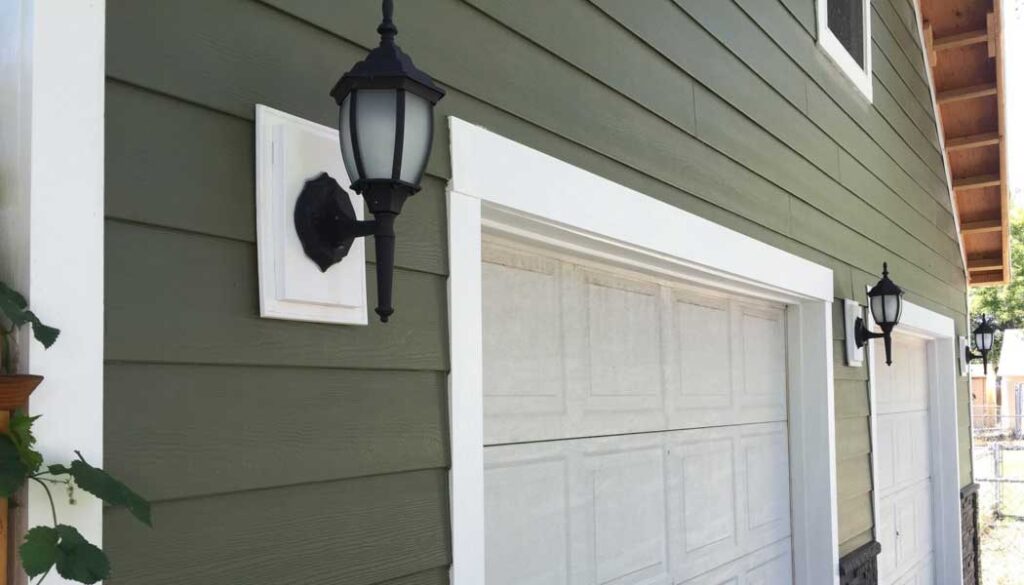
How Often Does Hardie Board Need to Be Painted?
Looking to maintain the perfect appearance of your Hardie board siding? Wondering about the ideal painting schedule to keep it looking its best? But the burning question on every homeowner’s mind:
“How often does Hardie board need to be painted?” Hardie board typically needs to be painted every 10-15 years, depending on some factors like climate, sun exposure, and maintenance.

Let’s explore together the world of Hardie siding and maximize its aesthetic appeal effortlessly!
How Often Does Hardie Board Need to Be Painted?
Hardie board is also known as fiber cement siding. It is a popular choice for exterior cladding due to its durability and low maintenance requirements. When it comes to painting this board, the frequency depends on several factors. You should consider the quality of the paint, exposure to environmental elements, and the overall condition of the siding.
It typically comes pre-painted from the factory, and the paint applied during the manufacturing process is designed to last for many years. But keep monitor the board’s condition regularly, as external factors can affect this timeline.
Harsh climates, excessive sunlight, heavy rainfall, and high humidity can all accelerate the deterioration of the paint finish. Over time, the paint may fade or show signs of wear and require repainting. For example, areas with high levels of sun exposure, harsh winters, or saltwater environments may require more frequent repainting.
The frequency of repainting Hardie board can vary, but it is generally recommended to repaint it every 10-15 years.
Regular maintenance and inspection of the board are crucial for determining when it needs to be repainted. Look for signs of peeling, cracking, or chipping paint, as well as any areas where the substrate is exposed. If these issues are present, it is advisable to repaint the affected areas promptly. It’ll prevent further damage and ensure the board’s longevity.
When repainting Hardie board, follow the manufacturer’s guidelines. Make sure to use high-quality exterior paint that is suitable for fiber cement siding. Proper surface preparation is also crucial for achieving a long-lasting and aesthetically pleasing paint finish.
How Long Can Hardie Go Unpainted?
It is recommended to paint Hardie siding within 180 days (approximately 6 months) of installation to ensure optimal protection of the product.
But the exact time period that Hardie siding can go without painting can vary due to many factors.
Painting fiber cement siding provides an additional layer of protection against environmental factors. Unpainted fiber cement siding may be more prone to fading, discoloration, and potential damage over time.
Remember, James Hardie Industries strongly advises painting their fiber cement siding products as part of their recommended guidelines. Painting helps maintain the warranty and extends the lifespan of the siding. Therefore, it is generally recommended to paint the siding within a reasonable timeframe after installation.
If you have specific concerns or requirements regarding Hardie siding, it’s best to consult the official documentation.
What Are the Signs of Paint Failure on Hardie Board?
While Hardie board is known for its durability, even the highest-quality paint systems can experience failure over time. The signs of paint failure on Hardie board can include:
Peeling or Flaking: Paint that is coming off in small or large chips indicates a failure of the paint adhesion to the Hardie surface.
Blistering or Bubbling: The appearance of bubbles or blisters under the paint film is a sign of moisture or heat trapped beneath the surface. It causes the paint to lose adhesion and eventually peel.
Fading or Chalking: When the paint color starts to fade or become chalky, it indicates degradation of the paint film.
Cracking: The development of fine or large cracks resembling the scales of an alligator suggests the paint film is aging and losing its elasticity. It can happen due to repeated expansion and contraction of the Hardie Board.
Staining or Discoloration: The presence of stains or discoloration on the painted surface can be a sign of water intrusion, moisture buildup, or underlying issues that are affecting the paint’s integrity.
If you notice signs of paint failure on your Hardie board, it may be necessary to address the issue on time to maintain the aesthetic appeal of the surface.
Factors Affecting Paint Durability on Hardie Board
Several key factors can influence the longevity and overall performance of the paint coating.
Moisture Management: Hardie board is resistant to moisture, but excessive moisture can still affect paint durability. It is important to ensure that the board is adequately protected from water intrusion. Proper flashing, caulking, and maintaining a suitable gap between the board and adjacent materials can help prevent moisture-related issues.
Quality of Paint: The quality of the paint itself plays a significant role in determining its durability. Choosing a high-quality, exterior-grade paint designed for use on cementitious surfaces can provide better adhesion.
Paint Application: Applying the paint at the recommended thickness and using the appropriate tools can help achieve a uniform and durable finish. Multiple coats may be necessary for optimal coverage and durability.
Environmental Factors: Exposure to extreme temperatures, UV radiation, moisture, and other environmental factors can cause paint to degrade. It is great to choose paints that are specifically formulated to withstand the local climate conditions.
Maintenance Tips to Extend Paint Longevity on Hardie Board
Proper maintenance can further extend the paint longevity. Here are some tips to help you maintain the paint on your Hardie Board siding.
Regular Cleaning: Perform regular cleaning of your Hardie siding to remove dirt, dust, and other contaminants that can degrade the paint. Use a soft-bristle brush or a low-pressure power washer to clean the surface. Avoid using abrasive materials or high-pressure washers, as they can damage the paint.
Inspect for Damage: Conduct periodic inspections to identify any signs of damage to the paint. Look for cracks, peeling, or areas where the paint has worn away. Promptly repair any damaged areas to prevent water infiltration and further deterioration of the paint.
Touch-up Paint: If you notice any small areas where the paint has chipped or worn off, touch them up quickly. Use an exterior paint that matches the color of your Hardie board siding.
Avoid Harsh Chemicals: When cleaning the siding, avoid using harsh chemicals, such as bleach or ammonia-based cleaners. These chemicals can fade or discolor the paint. Use mild soapy water recommended by the manufacturer.
Trim Landscaping: Trim back any bushes, trees, or vines that are in close proximity to the Hardie board. Overhanging branches or plants can cause moisture buildup, which can accelerate paint deterioration. And potentially they lead to mold or mildew growth.
Maintain Proper Drainage: Ensure that your gutter system is functioning correctly and directing water away from the siding. Proper drainage is essential to prevent water from seeping into the substrate and causing paint damage. Keep the gutters clean and free from debris that can clog them.
Can You Paint Hardie Board a Different Color?
Certainly! Hardie board siding can indeed be painted in a different color to suit your preferences.
Consider your home’s architectural style, the surrounding environment, and personal preferences when choosing a color for the siding. Obtain paint samples and test them on a small section of the siding to ensure you are happy with the color before proceeding with the full application.
You can consider colors like classic white for a timeless look, neutral gray for a contemporary feel, and coastal blue for a refreshing vibe. Also, warm taupe for a cozy atmosphere, olive green for a natural blend, deep charcoal for a bold statement, or soft beige for an elegant touch can give you joy.
Conclusion
Periodic repainting every 10 to 15 years, are recommended for Hardie board to preserve its aesthetic appeal. By investing in proper care, you can ensure that your Hardie board retains its beauty and contributes to the long-lasting durability of your home or building.
